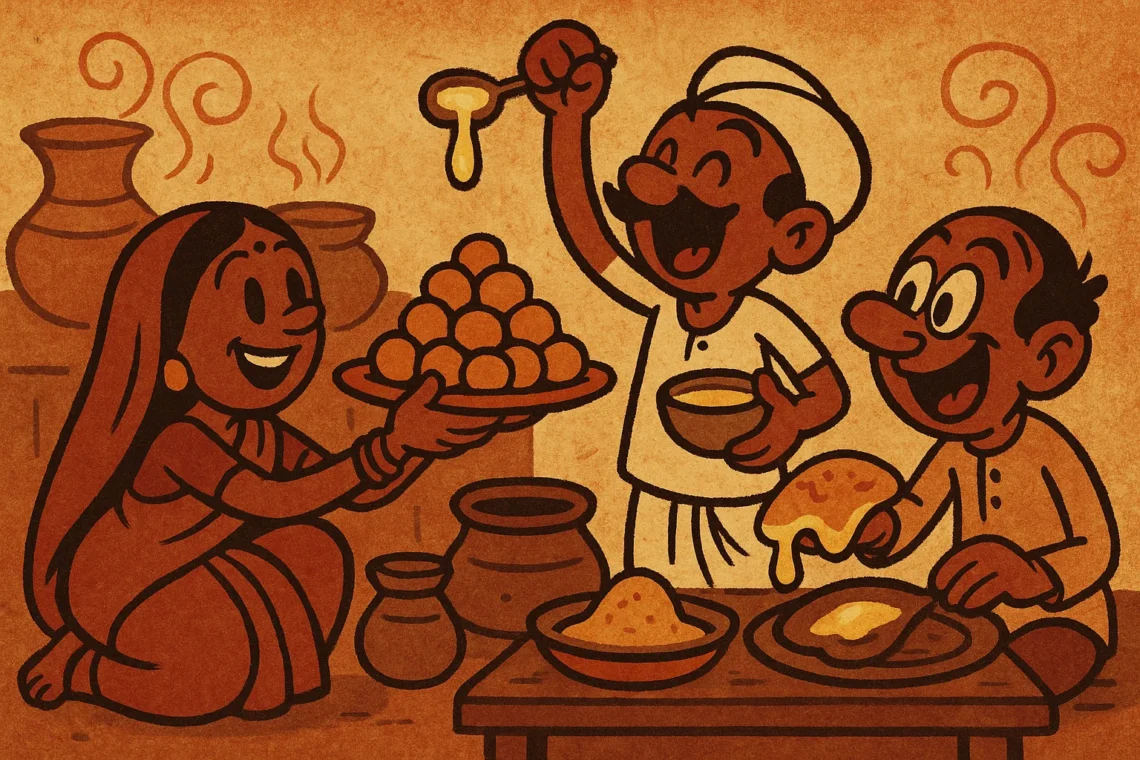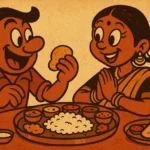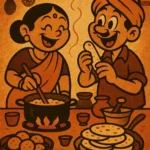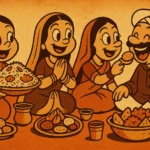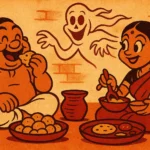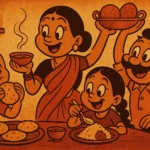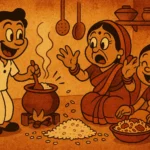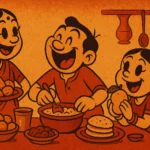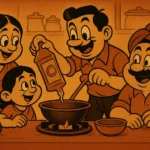Follow the scent of slowly melting ghee, and you’ll find your way to nearly every Indian kitchen. It starts as a soft sizzle, grows into a buttery whisper, and before long, curls its way under doors, around corners, into memories. Ghee isn’t just an ingredient. It’s an heirloom. A ritual. A flavor and a feeling wrapped in one golden spoonful. And though it shows up everywhere—from temple kitchens to wedding thalis—it never shows up the same way twice. Because in India, ghee has accents.
There is no single ghee. There is ghee made from cow’s milk in the north, from buffalo milk in the west, from local desi breeds in the south. Some is grainy and rich. Some is smooth and pale. Some is homemade and stored in ancient steel containers that smell like four generations. And wherever you go, ghee tells a slightly different story.
North India: Ghee as Foundation and Finish
In Punjab and Uttar Pradesh, ghee is not a drizzle. It’s a downpour. It’s how you start your dal and how you finish your roti. A bowl of steaming hot rajma-chawal without a spoonful of ghee melting in the center feels like an unfinished sentence. In Punjabi homes, ghee is smeared on parathas while they’re still puffed and warm, then followed by that classic question: “Aur thoda lagaaun?”—a question that is rhetorical and usually means “I already added more.”
In festive dishes like halwa and pinni, ghee gives depth and weight. During winters, laddoos get extra ghee “for strength.” It coats your fingers, your lips, and your soul. Even when you can’t see it, you can taste it. It’s the secret agent of indulgence.
West India: Ghee and Grain
In Gujarat and Rajasthan, ghee holds hands with grains. Bajra rotla, jowar bhakri, and dal baati—they all come alive only when doused generously in ghee. In fact, dal baati is less about the lentils and more about how the baati—those coarse, hard wheat balls—is shattered, flooded with ghee, and allowed to soak like a dry sponge in the rain. It’s not for the faint-hearted. Or the cholesterol-conscious. But it is, undeniably, comfort in its most primal form.
In sweet dishes like mohanthal or churma laddoos, ghee binds everything. Without it, these sweets crumble. With it, they become celebratory. Rich. Revered. Often too much, and somehow never enough.
South India: Ghee with Structure
South India uses ghee like punctuation. It’s added at just the right moment, not to drown, but to elevate. A drizzle of ghee on hot sambhar rice makes it silkier. A spoonful on pongal turns it from practical to poetic. In Karnataka and Tamil Nadu, ghee is offered in temples, poured with reverence over rice offered to deities, and then served to devotees who know that the taste of divinity comes with a spoon of fat.
In Kerala, ghee is cooked into everything from banana halwa to payasam, giving it gloss and gravity. And in Andhra homes, fiery gunpowder (podi) is nothing without hot rice and ghee. The ghee here is soft-spoken but essential—a backstage presence that steals the show with one simple pour.
East India: Ghee with Occasion
In Bengal and Odisha, ghee is more reserved. It waits for the right moment. It’s not for daily use, but for celebration, for pooja, for prasad. In khichuri during Durga Puja, in suji halwa on birthdays, in the chaaler payesh that marks beginnings—ghee is the final blessing. It’s that glisten on the surface that says, “This is sacred. And also, delicious.”
In Odia temples, the preparation of mahaprasad is incomplete without desi ghee. The smoke from the chulha mixes with the scent of melting ghee to create an aroma that’s as spiritual as it is sensory. It clings to your clothes and your memories for hours after.
Ghee in Temples, Weddings, and Kitchens
Every major Indian celebration smells faintly of ghee. In temples, it’s used in diyas and prasad. In weddings, it shows up in laddoos stacked like architecture. And in kitchens, it sits on the shelf in its own designated tin or ceramic pot, often with a dedicated spoon that’s never used for anything else.
Even the act of making ghee is its own ritual. Boiling down cream or butter till it transforms into liquid gold and the house smells like childhood. The crackle of the last milk solids turning brown is like the final note in a well-played raga. You wait, you pour, you strain, and then you stare at the result like you’ve made something holy.
Across Regions, a Shared Memory
Today, health articles debate whether ghee is good or bad, whether it’s “clarified butter” or “superfood.” But those who grew up with it know: ghee isn’t defined by nutrition charts. It’s defined by memories. The taste of ghee on hot rice after a day of exams. The smell of it when you come home and know something special is being cooked. The feeling of ghee melting on your palm as you shape laddoos with your mother during Diwali prep.
Every region has its ghee story. But the emotion it stirs is the same. Warmth. Fullness. A kind of edible affection.
Follow the ghee trail across India, and you don’t just find dishes. You find people. Moments. Homes. You find that no matter how diverse our languages and spices are, we all speak ghee fluently.
Born in Mumbai, now stir-frying feelings in Texas. Writes about food, memory, and the messy magic in between — mostly to stay hungry, sometimes just to stay sane.

